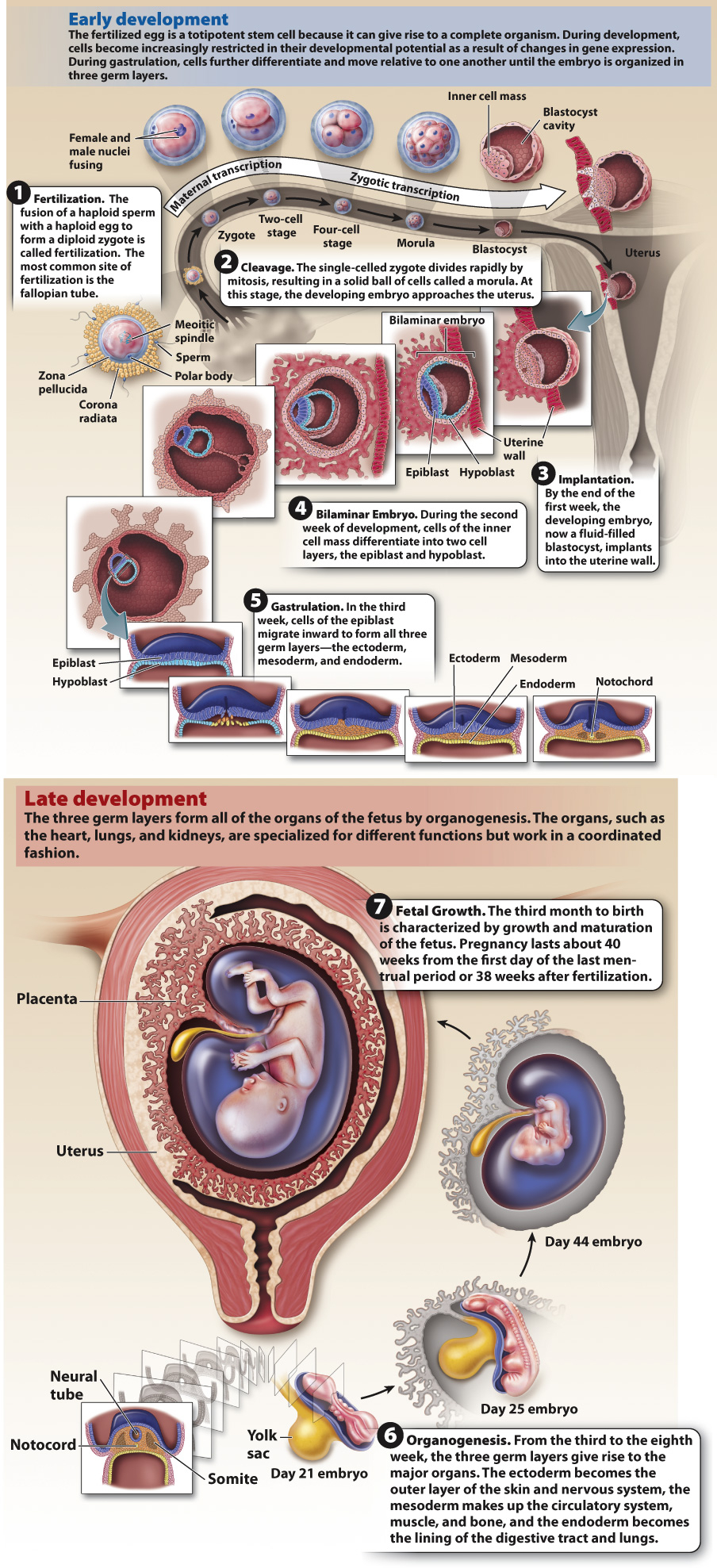The second and third trimesters are characterized by fetal growth.
The second trimester, from around 13 to 27 weeks, is characterized by continued development and growth of the fetus. This is the time when fetal movements can first be felt by the mother. Because of improvements in medical care, babies born in the last few weeks of the second trimester are often able to survive.
The third trimester, from 28 to 40 weeks, is characterized by rapid growth, with the fetus doubling in size during the last 2 months. Weight gain is critical, as birth weight is a major factor in infant mortality. The fetus often moves less frequently during this trimester as it becomes increasingly compressed by limited space. Although 40 weeks (from the last menstrual period) is the average length of pregnancy, a baby born between 37 and 42 weeks is considered term. Human development from fertilization to the end of pregnancy is summarized in Fig. 42.24.
VISUAL SYNTHESIS

Quick Check 5 A multicellular organism starts off as a single cell, which divides by mitosis to produce many cells. Therefore, for the most part, all the cells in a multicellular organism are genetically identical—
Quick Check 5 Answer
In the process of development, cells differentiate into different cell types. The process of differentiation involves the turning on and turning off of specific genes. So, for example, genes that are expressed in a skin cell are different from those that are expressed in a liver or muscle cell. These changes in gene expression, once established, are for the most part stable through mitotic cell divisions.